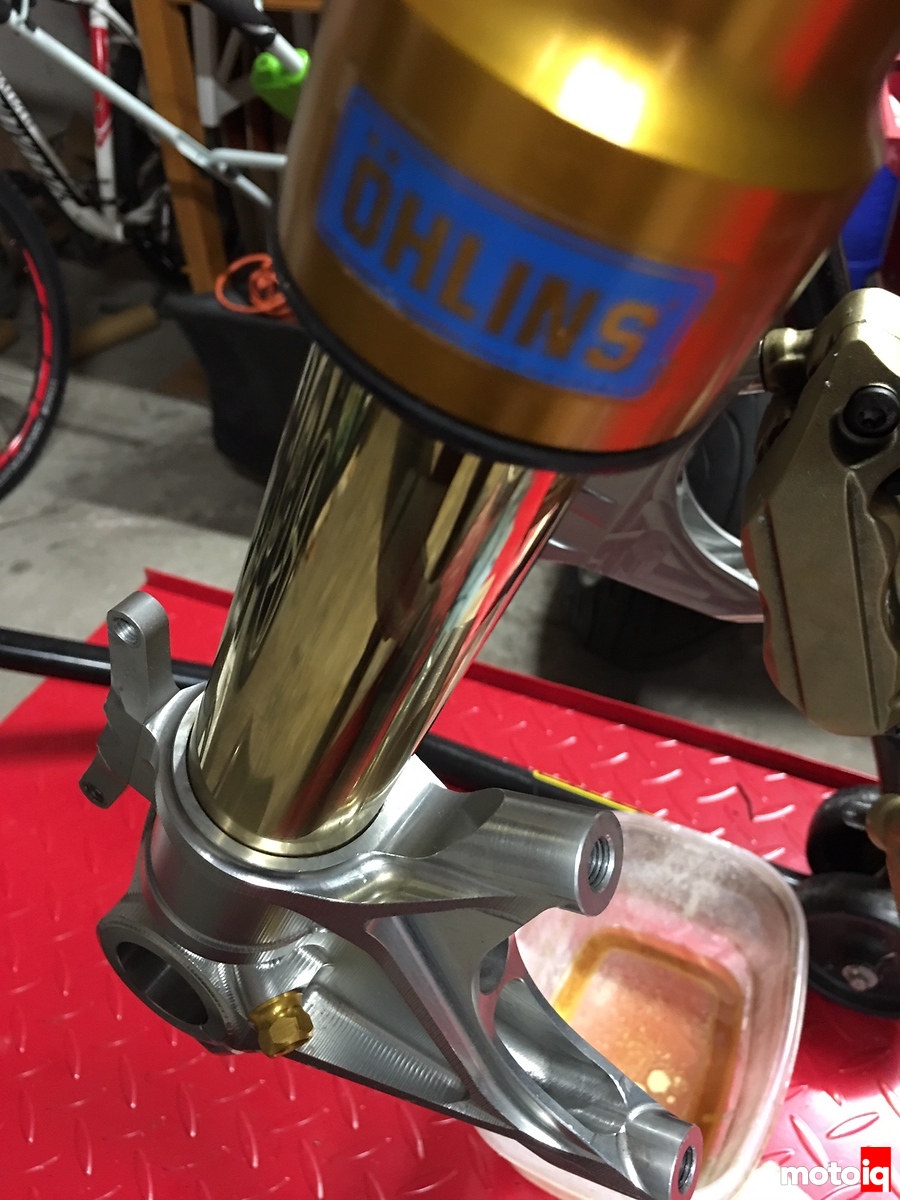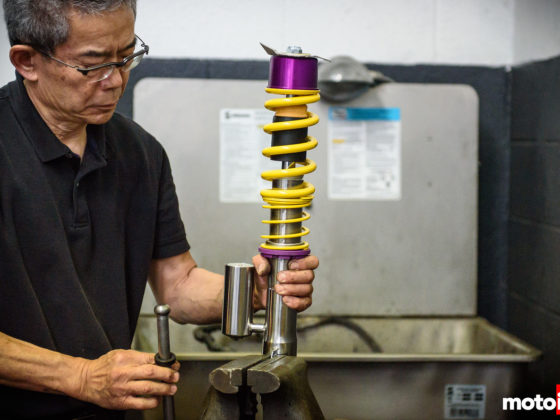Because I wanted to take advantage of the stock steering head angle adjustability, I searched for some adjustable triples clamps. There are lots of 30mm offset triple clamps available, but I really wanted something with adjustability so that setup could be changed to find what I liked best. I have Attack Performance clamps on my Triumph and love them, but came across these Podium Racing units on Facebook marketplace for great price.
As delivered the Podium clamps with a -0- insert are 30mm offset, 6mm less than the stock units. I’ve gone with a -2- insert to start, resulting in a 28mm offset. With the Ducati’s headstock adjusted to its 23.5 degree position, and the clamps with a 28mm offset, the front wheel comes into contact with the radiator at full compression of the front suspension. To eliminate this problem the radiator fans were removed so the bottom of the radiator could swing back toward the cylinder head. I’ll have to remove the fork caps and fully compress the forks to see how much room I have to spare if any, but I believe this will work.

Ducati 999 and 998 radiators are very similar, but their hose routing is a bit different. The 999 uses a nice plastic coolant housing that tucks nicely along the left side of the horizontal cylinder and eliminates the hose-mess of the 998. However, it does not have a provision for the water temperature sensor like the 998 hose routing does. So I purchased a little adapter than splices into the radiator hose that will house the coolant temperature sensor. Cutting the hoses also helped me position them a little better to fit after moving the radiator back.

For the initial chain and sprocket setup, a 520 pitch DID chain and 15 tooth front and 40 tooth rear sprockets with quick release carrier were selected. When putting them on I noticed the rear eccentric wouldn’t travel 360 degrees. It got bound with the axle around the 240-degree position. The locator pin for the rear brake caliper bracket stops the movement. This limits the effective swingarm length, which you want as long as possible for these machines. The caliper bracket was milled out with a Dremel until the eccentric moved 360 degrees. Now the rear axle can sit at nearly the 270-degree position with proper chain tension. This moves the weight bias toward the front of the bike and will be all-around positive for handling. To give some reference the Triumph 675 has a swingarm length nearly 75mm longer than the 998, coupled with a shorter wheelbase. The 998 needs all the swingarm length it can get. Some people swap the later generation 848 swingarm onto the older 998 for this reason. The swingarm swap is illegal in the Modern Classic racing class, however.





6 comments
Be careful substituting in stainless steel bolts in the place of carbon steel bolts. Austenitic stainless steels like 18-8/304 are typically very low strength with the amount of work hardening that goes into making a bolt. Additionally, the different methods of making a bolt, and how much the threads are rolled drastically affect the final tensile strength of the bolt, to the point that they typically aren’t even rated for tensile strength or hardness.
Most low carbon bolts are going to have a tensile strength in the 115-145 ksi range, while most commercial CRES bolts will be in the ~70-85 ksi range.
Great comment Def. McMasterCarr sells multiple types of stainless fasteners. For clarification, I used the ‘High Strength Stainless Steel Socket Head Screws’ specifically because they have a higher tensile strength of 110 ksi vs the regular stainless’s 70 ksi.
I think either would work though; titanium bolts are readily available as replacements and have less tensile strength than either type of steel.
A good point to make Rob, it might be good to note this in the article because I was thinking the same thing as Def.
Updated. Thanks again for the comment Def!
Had the exact same thought regarding 300 series stainless fasteners. Nice find with the high strength options. That being said, there are many titanium fasteners that are 110+ ksi. The ones on mcmaster that quote 50 ksi are probably grade 2 titanium for corrosion resistance. Grade 5 is much stronger and that’s what is more typical for performance oriented fasteners (pro-bolt, allied titanium, etc.)
You’re right. Pro bolt lists grade 5 for their titanium fasteners with a ‘greater than 120ksi’ tensile strength. They also list shear modulus, ductility, Rockwell hardens etc. Really quite impressive that they have all of this information for the customer.
They also DLC coat the fasteners for corrosion resistance. Shame their too expensive typically for a cheap ass like myself.